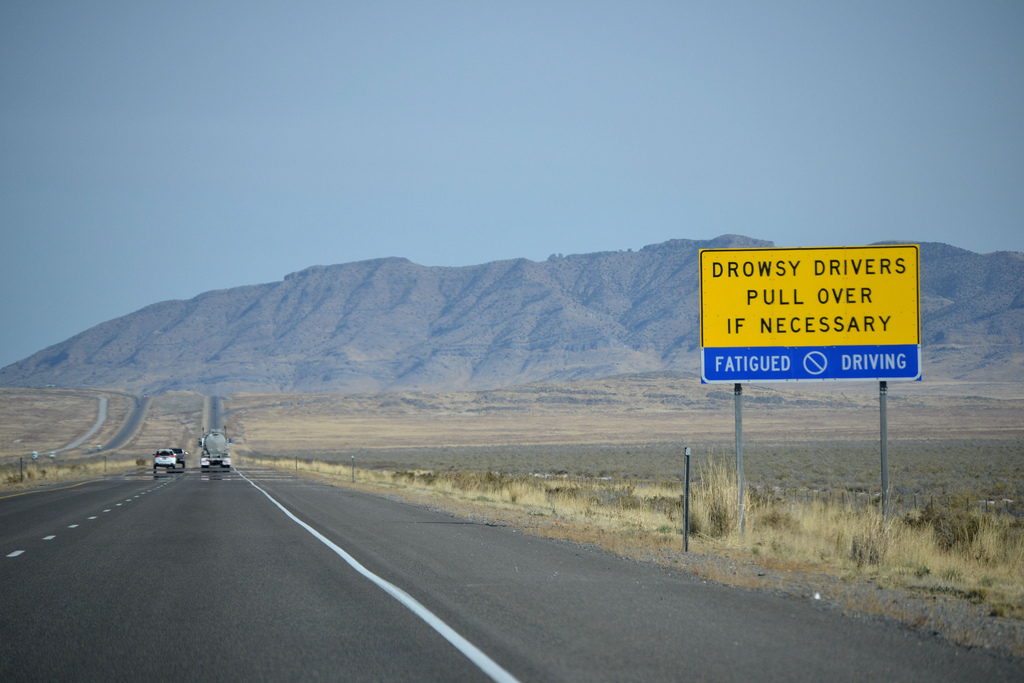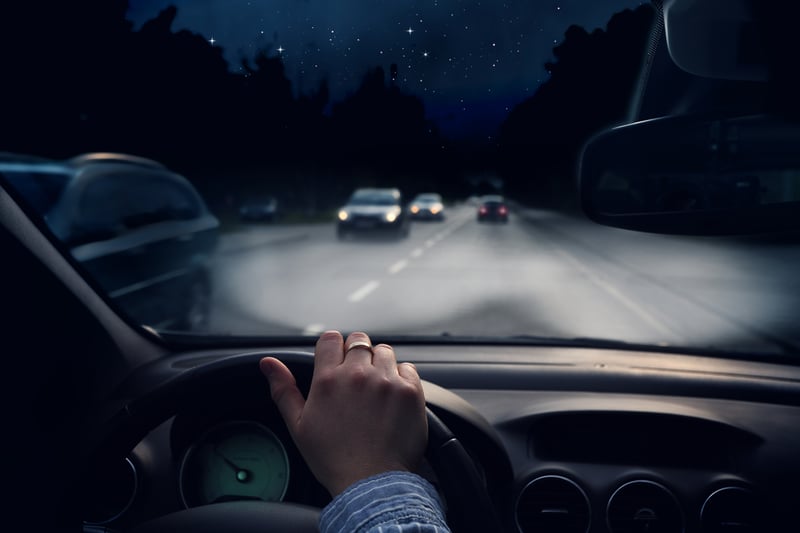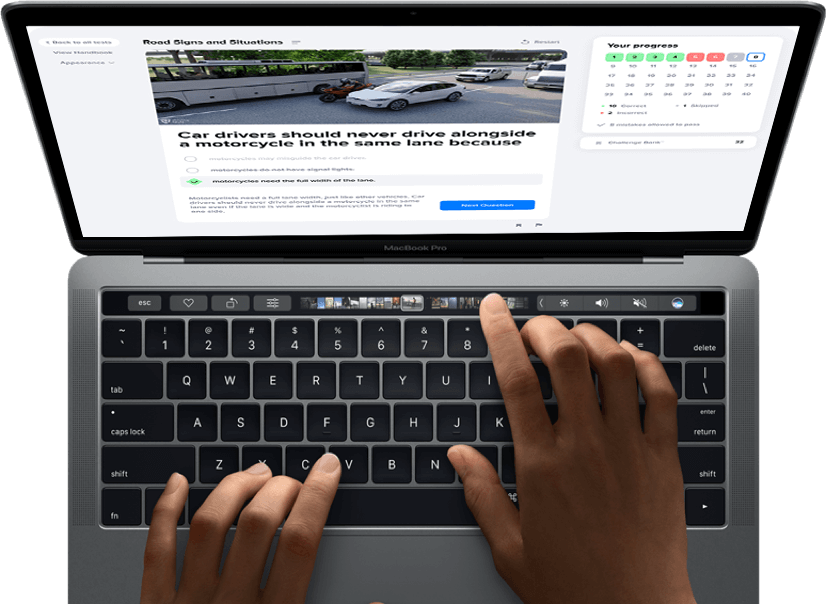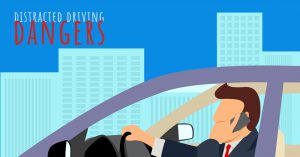Many motorists complain about feeling less confident while driving at night, even those who do not have vision problems such as night blindness. Combine less visibility with any other factor –such as poor weather conditions or being tired, and this could increase the risk factor involved. Because newer drivers can lack the experience to deal with night driving, not to mention the confidence, it is a good idea to keep some tips in mind when it comes to safety and night driving. Some reports indicate traffic related fatalities are as high as three times greater during the dark, night time hours!
Try These Top 5 Safe Night Driving Tips
- 1
Use Those Headlights!
It is actually a good idea to get in the habit of having your headlights on more often than not. At the very least, you should turn your headlamps on about an hour before dusk. This makes it easier for you to see as the sun sets, but also makes you more visible to other drivers. Of course, during times of bad weather, consider using your lights regardless of the time of day. Thunder storms, for example, can bring in dark clouds that turn the sky almost as dark as night.
You should be courteous enough to make it easier for others to see you. If it is even questionable, why not use your lights? It can’t do any harm, unless it’s a case of using your high beams and making it difficult for drivers you are sharing the road with the be able to see anything.
- 2
Back Off!
While it is never a good idea to follow too closely, this bad habit should be avoided during dark hours and when weather is bad. There are several reasons this is a terrible rule to break during night driving. One is that you make the other driver nervous, which makes him or her more likely to react badly to something in the road and cause a wreck. Also, the closer your headlights are, the brighter they can seem and more distracting they can be. Again, this makes the driver ahead of you nervous and can also limit his or her visibility and end up causing problems.
Another reason you should try to increase the following distance between you and the car in front of you is that during the dark, night hours, your visibility in front of the car in front of you is lessened. During the day, you can see and, therefore, react better to things that may be a problem ahead on the road or off to the side. With limited sight distance, you are setting yourself up to have problems.
Here is a comprehensive guide to maintain an appropriate following distance when driving:
Backing off from someone else’s back bumper also means regulating your speed. Because you should consider driving at slower speeds during the evening hours as opposed to the daylight hours, backing off will enable you to monitor this. If applicable, use your cruise control to stay under the speed limit.
- 3
Keep Your Eyes Moving And Be Alert!
The best way to avoid an incident at night is to be watching for lights and movement and keep checking those mirrors. It is as important to keep an eye out for other cars’ headlights as it is to spot other things, such as cars without headlights. At night it is harder to see animals on the side of the road, children still playing in the street or debris that could already be present or become a problem.
Stay alert by checking mirrors regularly enough to be aware of what is happening all around you. That also means being at the top of your game for defensive driving skills. Sometimes, especially at night, it’s more about watching for other driver’s mistakes than having to worry about your own. That said, also make sure you keep your mirrors clean and have them pointed in a direction that will make it easier for you to see but also lose any glare, if possible.
- 4
It’s All About The Headlights!
Keeping the headlights clean, aimed in the right direction and lit is the key to safe night driving. One big mistake people make is driving around too long with just one headlamp burning. First of all, this obviously cuts down on your visibility. Secondly, there’s a chance the other one will burn out leaving you out some night with no working headlights. Not only will this get you a ticket from the police, it would be one of the most dangerous things you could do.
Be aware of foggy or hazy headlights that require special headlight lens restoration kits (Dave Linger)
Also, keep the lights pointing in the right direction. Some states have inspections and this could be a good time to get bulbs replaced, before waiting for them to burn out, as well as to get a professional to help get the lamps pointed the right way.
- 5
Stay Awake!
While many drivers actually prefer night driving when it comes to trips or other long hauls on the road because it is cooler in the summer and the roads are less crowded, it can be more dangerous. Because your body, for most people, is accustomed to sleeping once dark sets in, starting off on a road trip with hours of driving instead of sleep ahead and can be tricky to get your body to agree to. So, be aware of this and plan accordingly.
First of all, still leave as early as possible. Getting on the road after five o’clock rush hour traffic clears up is generally a good time to start. For many people, starting while it is still light then settling into sunset and dark helps the body, mind and eyes adjust. On the other hand, for some, the transition makes them more tired. In that case, leaving once it is as dark as it is going to get may be what you need. Learn what kind of night driver you are and plan accordingly.
Be aware of foggy or hazy headlights that require special headlight lens restoration kits (Garrett)
The rest is mainly common sense. Other simple tips to keep in mind:
- Monitor yourself and don’t wait until you have caught yourself nodding off a couple times to decide to do something about it.
- Sometimes, it is as simple as getting out of the car for a stretch and some fresh air.
- Other times, you might need some coffee or to just catch a buzz and second wind off of the people and lights of a convenience store.
- Do jumping jacks.
- Sing in the car.
- Roll the windows down.
- And know when to let go and pull over to a safe rest area or get a hotel room and get some real sleep.
Free DMV Practice Tests
- Alabama
- Alaska
- Arizona
- Arkansas
- California
- Colorado
- Connecticut
- Delaware
- District of Columbia
- Florida
- Georgia
- Hawaii
- Idaho
- Illinois
- Indiana
- Iowa
- Kansas
- Kentucky
- Louisiana
- Maine
- Maryland
- Massachusetts
- Michigan
- Minnesota
- Mississippi
- Missouri
- Montana
- Nebraska
- Nevada
- New Hampshire
- New Jersey
- New Mexico
- New York
- North Carolina
- North Dakota
- Ohio
- Oklahoma
- Oregon
- Pennsylvania
- Rhode Island
- South Carolina
- South Dakota
- Tennessee
- Texas
- Utah
- Vermont
- Virginia
- Washington
- West Virginia
- Wisconsin
- Wyoming




